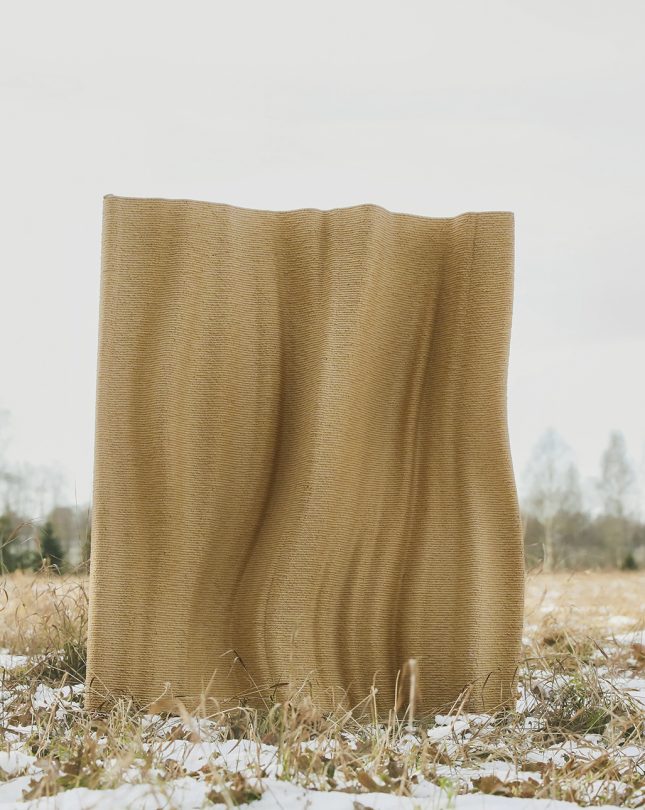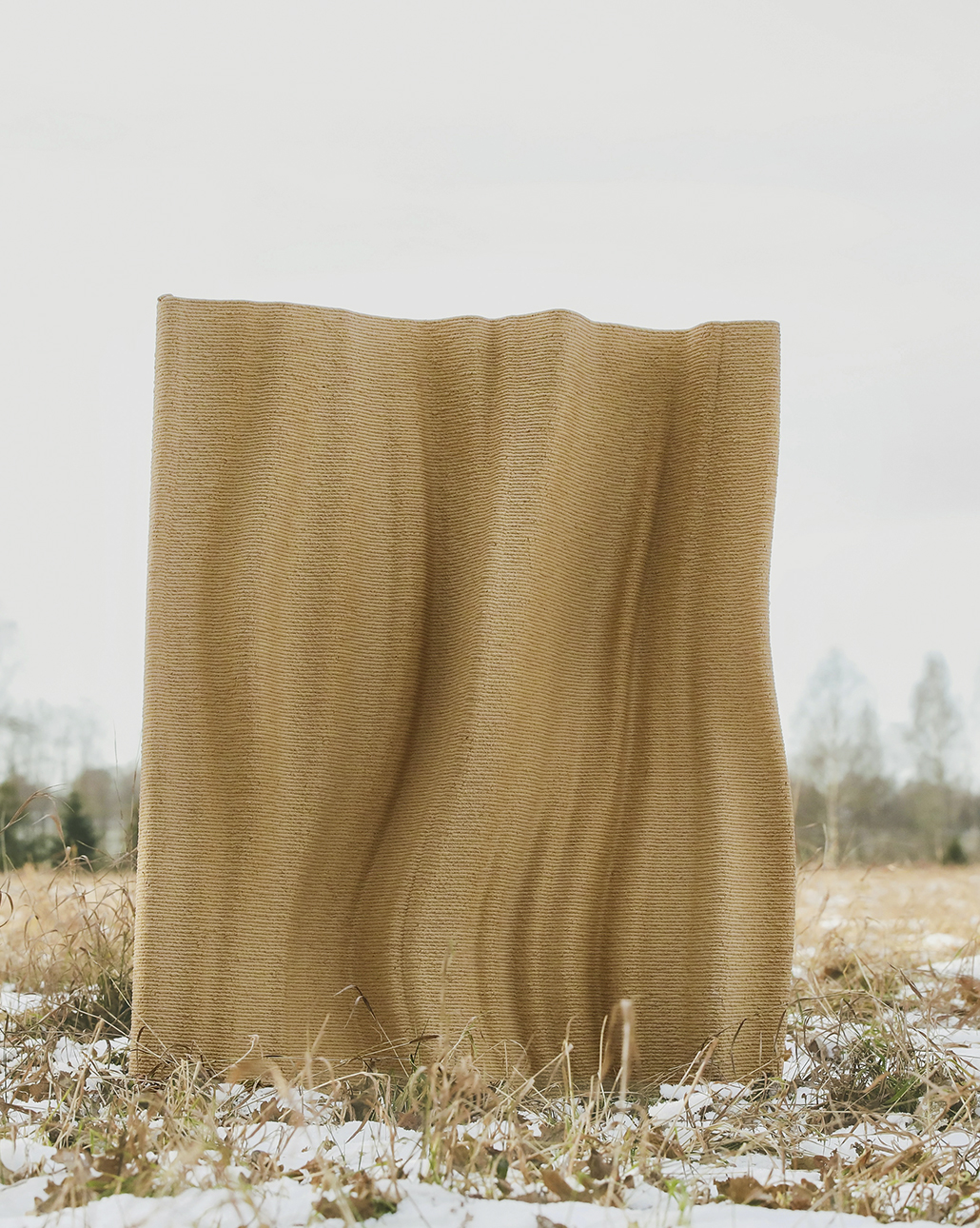Our latest news and views English
Underpinned by our Scandinavian design heritage, we bring you regular stories about architecture and interiors, exploring natural materials, acoustics, and the creation of safe and harmonious environments.

Designer Simon Mattisson tells us about his collaboration with Gustafs to 3D print acoustic panels from waste materials.
The Gustafs team spotted one of my 3D-printed shelves at a place called Circlab, where I produce my pieces. This producer specialises in 3D-printing using renewable materials and bio-composites – which are created by mixing wood fibres with fossil-free biodegradable plastics and resins. They were intrigued and got in touch.
When I was studying industrial design at Beckmans College of Design, in Sweden, my final project was called Granland. This word can be translated as ‘spruce land’ and is also a play on the word grannland, which means ‘neighbouring country’.
For the project, I developed a wood composite to use in large-scale 3D printing. The material was salvaged from trees that had been ravaged by European spruce bark beetles. These insects usually attack dead or decaying trees. They play an important role in the ecosystem, however after a drought in 2018, they started tunnelling into healthy trees.


In Sweden, 40% of the tree population is spruce, so the fact that these beetles are ravaging healthy trees has become a major crisis in the forestry industry. Once the tree has been attacked, the wood cannot be used however you can grind it down and use the individual polymers to print 3D furniture, so this is what I did for Granland. The furniture forms were inspired by the tunnels that the beetles create when they burrow into the wood.
“We did not only create some original panels, we invented a new material!”
Our starting point was to test whether we could 3D print interior acoustic solutions. It was something I’d been thinking about too, so it was good timing! The shapes you can achieve using 3D printing technology, such as double-curves, can work as interesting wall panels but also have acoustic benefits when it comes to diffusion of sound.
We took two approaches: firstly we created a large wall piece using 3D-printing; then we made a smaller piece by attaching 3D-printed shapes onto felt backing.
With the first piece, the shape helped to diffuse sound, while in the felt-backed piece, the felt enhanced the acoustic properties, including absorption. Both pieces are very much inspired by nature. The larger wall piece is inspired by rocks and mountains; the felt-backed panels are inspired by underwater kelp forests. These were both prototypes; the next step would be to look at how to commercialise each piece.
Well, we not only created some original panels, we invented a new material! I think it’s one of the first walnut composites suitable for 3D printing. Walnut is expensive, so you wouldn’t normally want to grind it down. However, the manufacturing process for Gustafs’ veneer panels leaves you with small pieces of high-quality walnut that are not of use. By grinding these pieces down and mixing the material with a biodegradable resin, we’ve developed our own sustainable material for 3D printing.
I think it’s an exciting material. Wood is renewable and can create so many different shapes and objects. You can use solid wood, veneers, you can bend it, keep it straight, 3D-print with it, cut it, and so on.
Of all the materials I’ve worked with, wood is perhaps the hardest to control. It’s a material created by nature and there’s an element of unpredictability, which I find fascinating. Each species of wood is unique in its grain pattern and colour. I think wood will always be an important material, especially in the Nordic countries.
Design: Simon Mattisson
Film: Stratos Media
Photo: Ulrika Lundholm Eriksson
